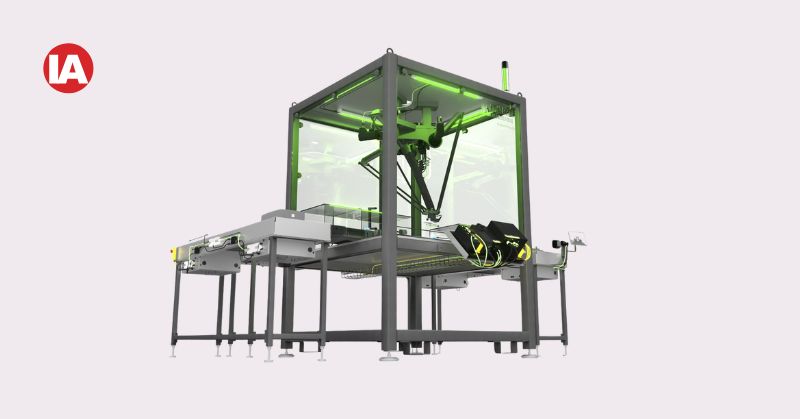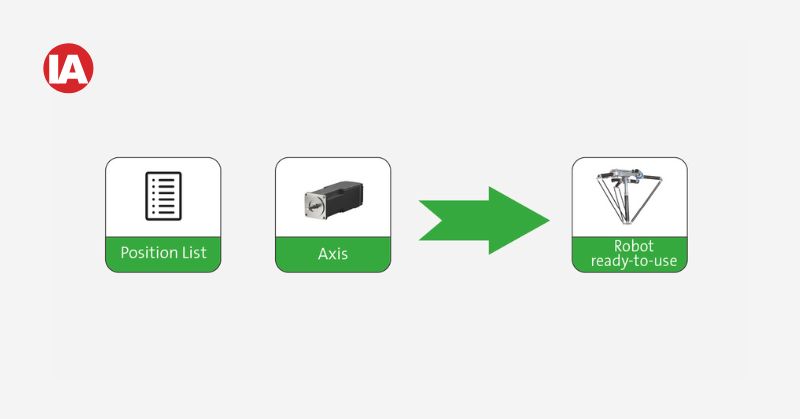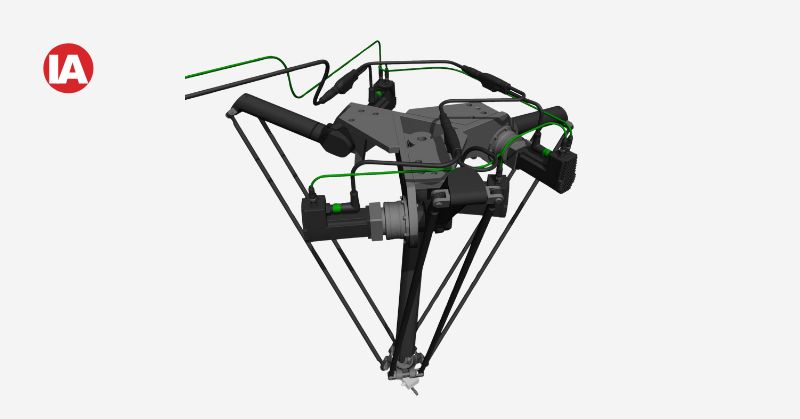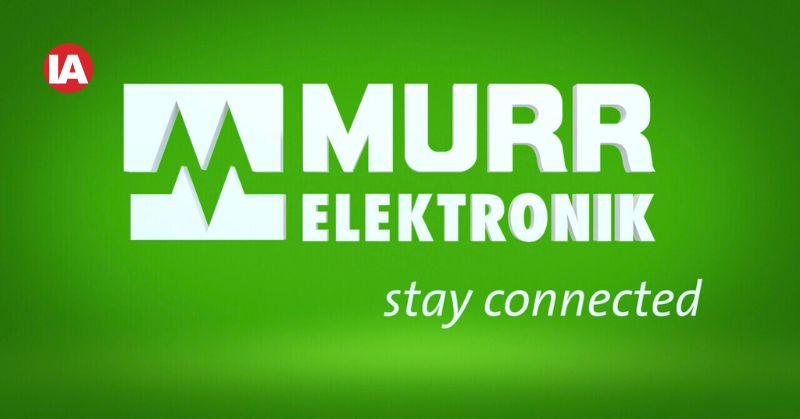
Complete Turnkey Solution for Delta Robots: No Programming – Just Parameterisation
Murrelektronik has introduced an innovative, turnkey solution for delta robots that significantly improves installation and commissioning speeds. By decentralizing control and integrating advanced technologies like machine learning and digital twins, Murrelektronik's solution enables faster, more efficient, and highly flexible automation for modern pick and place systems.
![[object Object]](https://admin.industrialautomationindia.in/storage/articles/article-WbhrMfCiHi79yNPZB6oSi0AVLGpcPa5Bo3RsoVAD.jpg)
Murrelektronik has developed a sophisticated, ready-to-use solution so that users of delta robots can achieve record speeds during installation and commissioning.

The demands placed on modern pick and place production systems are becoming increasingly complex. Growing cycle rates, varying product formats, and the demand for high precision require innovative solutions.
Traditional handling systems are steadily reaching their limits, especially when it comes to flexible integration into existing production lines. The main challenges are precise synchronisation of motion sequences, reliable part recognition, and efficient use of energy.
Many challenges, one solution: Delta robots
Delta robots have established themselves as a game changer in the field of pick & place because their kinematic structure offers decisive advantages: the parallel arrangement of the drives and the lightweight design of the moving components enable exceptionally high accelerations and speeds.
However, delta robots are not only impressive for their speed, but also for their ability to execute complex motion patterns with the highest precision. The integration of vision systems also enables dynamic adaptation to changing product positions and orientations.
Murrelektronik, the forerunner in decentralised electrical automation technology, has developed a sophisticated turnkey solution specifically for delta robots.

Ideal foundation
With the Vario-X platform, Murrelektronik is breaking new ground in electrical automation technology: through consistent decentralisation, the company is moving the control intelligence directly to the field level – making complex control cabinet designs superfluous.
A particular advantage is that the Vario-X controller, as the main control unit, not only handles all machine functions, but also controls several delta robots in parallel. This means that customers no longer need separate robot controllers.
But the idea of consistent decentralisation goes even further: all automation components are placed directly in the field. This drastically reduces installation effort and significantly increases system efficiency. The highly integrated Vario-X modules combine all necessary automation functions in compact, IP67-protected units.
These modules are connected via an intelligent connection concept that combines power and data transmission in a single system. The technology supports various communication protocols and allows flexible topology design. Automatic detection of connected components simplifies installation and significantly reduces the risk of errors during system integration. Measurements show that installation time can be reduced by up to 75 percent while increasing system availability.
Rethinking programming
The software modules developed by Murrelektronik for the Vario-X platform enable new, simple ways of programming delta robot applications: The predefined modules encapsulate complex algorithms for motion control, synchronisation and process optimisation in reusable modules. They are hierarchically organised and can be flexibly combined. This means that even users without in-depth programming knowledge can quickly adapt to different production scenarios.
The lowest level contains basic functions for individual motion sequences, while higher levels map complex process sequences and synchronisation tasks. A particularly innovative feature is the integration of machine learning algorithms in special software modules. These enable continuous optimisation of motion sequences based on real-time data.
Parameters such as acceleration profiles and synchronisation points are automatically adapted to changing production conditions. The implemented algorithms consider not only the efficiency of the movements, but also the energy consumption and the mechanical load on the system.
The software modules also implement a consistent error management system. Each module monitors its own execution status and can trigger defined reactions in the event of deviations.

Reality meets virtuality
The digital twin has ushered in a new era in the development and optimisation of delta robot systems. The entire commissioning program sequence can be digitally programmed and tested in advance in the office using CAD models. The programmer only has to do the final touches on site, saving time and money.
The accurate virtual representation of the plant includes all relevant aspects – from the mechanical and electrical systems to the control software – and creates a continuous link between the physical and digital world. Once created, the digital twin can be expanded and used throughout the lifecycle of the machine or plant – for example, for user training, remote service calls, or condition monitoring applications.
Implementation of the digital twin begins in the design phase. Motion sequences can be validated and optimised virtually before the first physical component is installed. Integrating physical simulation models enables accurate prediction of system behavior under real-world conditions.
Collision checking, cycle time optimisation, and energy efficiency analysis can be performed in parallel with design. Even cabling can be pre-planned and ordered with centimeter-level precision.
Murrelektronik offers further decisive advantages through bidirectional coupling between the real system and the digital twin during operation. Sensor values and process data are synchronised in real time – and deviations can be detected immediately. The implemented analysis algorithms continuously compare the actual behavior with the expected behavior and can identify potential problems at an early stage. This enables predictive maintenance and continuous process optimisation.
The digital twin also supports the development and validation of new production processes. Changes can be tested and optimised virtually before they are applied to the real system. Integrated simulation also makes it possible to analyse extreme scenarios and failures that could not be safely tested in the real system.
The combination of accurate simulation and real-time data acquisition brings a new level of quality to plant optimisation. Machine learning algorithms use the collected data to continuously improve the simulation models. This results in ever-increasing predictive accuracy and enables more precise process optimisation.
The open architecture of the digital twin also enables integration with higher-level production management systems, laying the foundation for the intelligent factory of the future.

True plug & play automation is ready-to-use
As a technology leader in decentralised electrical automation, Murrelektronik once again demonstrates its innovative strength with this delta robot solution. It is a complete, ready-to-use solution that fully meets the requirements of modern production environments.
The decisive advantage lies in the integrated concept, which covers all aspects of automation from hardware to connection technology and software integration. The result is a significant reduction in time-to-market.
Article courtesy: Murrelektronik
Author: Sarah Becker, Global Solution Engineer at Murrelektronik.